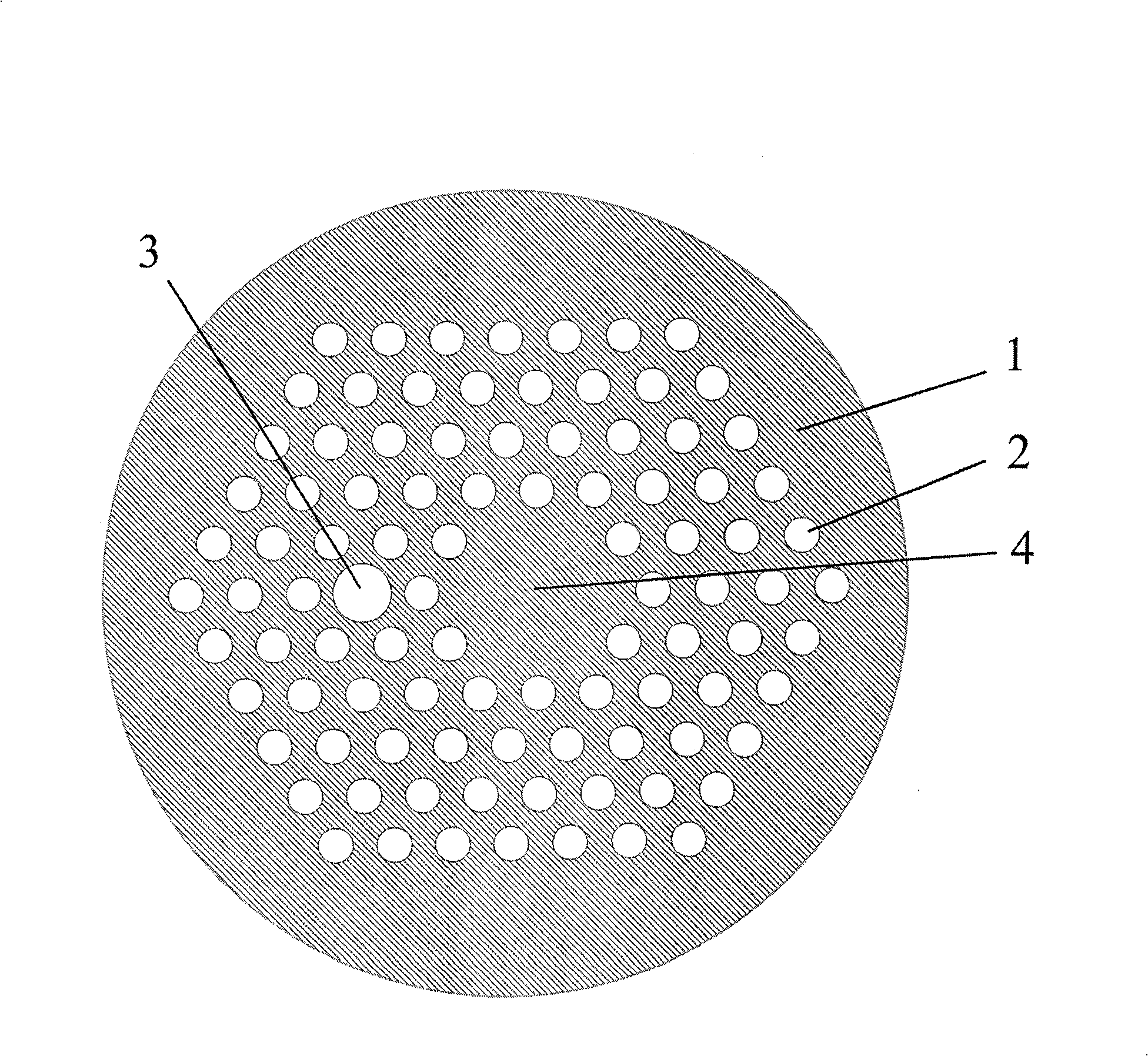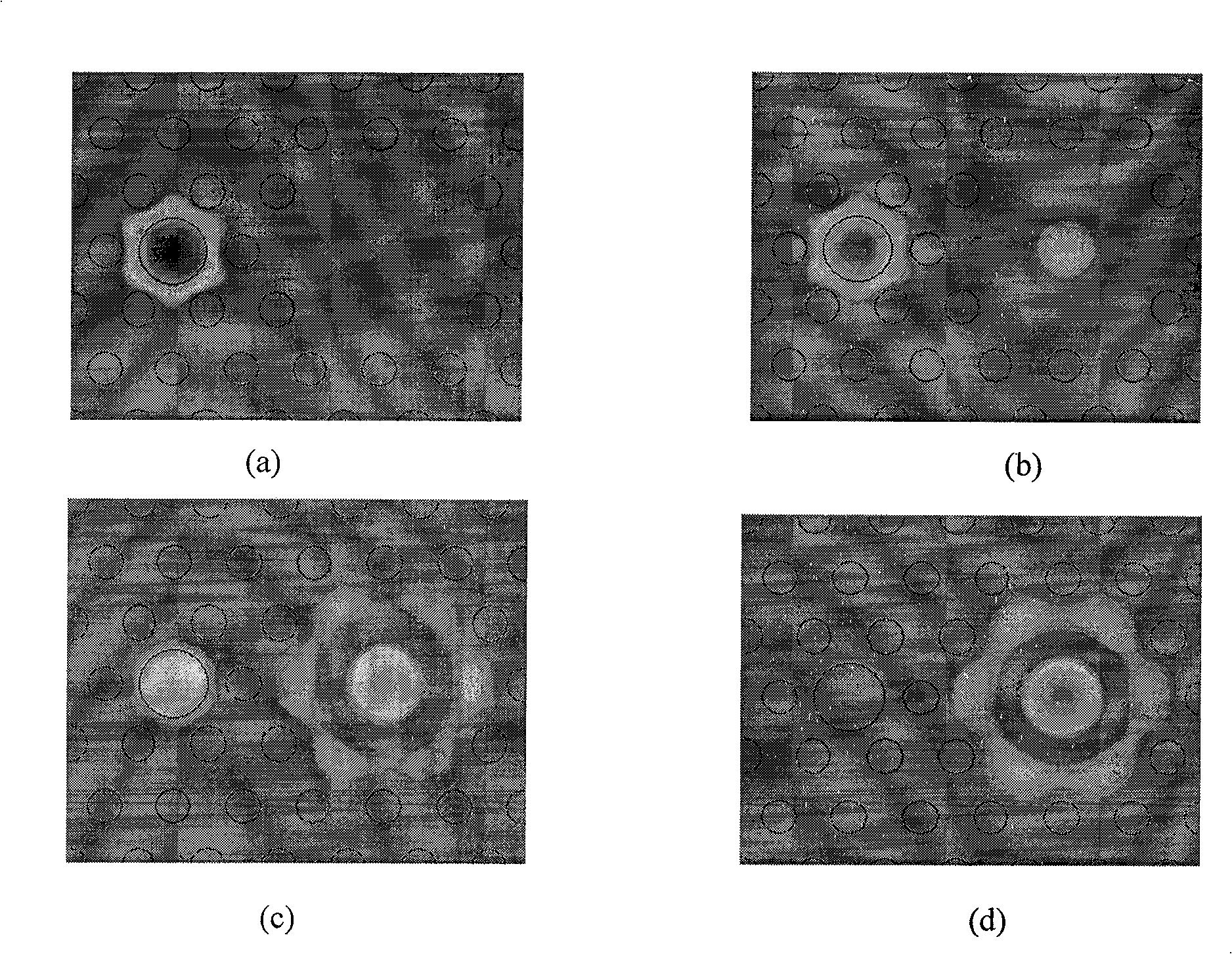Optical fibre mode converter
A mode converter and optical fiber technology, which is applied in cladding optical fiber, optical waveguide and light guide, etc., can solve the problems affecting the performance of optical fiber devices, and achieve the effect of competitive and easy mass production
- Summary
- Abstract
- Description
- Claims
- Application Information
AI Technical Summary
Problems solved by technology
Method used
Image
Examples
Embodiment 1
[0019] Such as figure 1 As shown, the matrix material 1 of the dual-core photonic crystal fiber is pure silica, the diameter d of the air holes 2 is 2.28 μm, and the hole spacing is taken as Λ=4.56 μm. The small core 3 is composed of doped silica, which has a refractive index 0.004 lower than that of pure silica. The large core 4 is composed of 7 missing air holes. The working wavelength is 1.55μm, and the fiber length is 12.7mm. figure 2 for figure 1 LP with small core in the structure shown 01 LP in mode and large core 02 Schematic diagram of the effective refractive index of a mode as a function of wavelength. The two curves intersect at this 1.55 μm, therefore, the LP of the small core at this wavelength 01 LP in the core of the mode and large 02 Modes will undergo periodic energy coupling. Taking the fiber length as the coupling length of the two, that is, 12.7mm, the purpose of mode conversion can be achieved. Using different fiber structure parameters, small c...
PUM
 Login to View More
Login to View More Abstract
Description
Claims
Application Information
 Login to View More
Login to View More - R&D
- Intellectual Property
- Life Sciences
- Materials
- Tech Scout
- Unparalleled Data Quality
- Higher Quality Content
- 60% Fewer Hallucinations
Browse by: Latest US Patents, China's latest patents, Technical Efficacy Thesaurus, Application Domain, Technology Topic, Popular Technical Reports.
© 2025 PatSnap. All rights reserved.Legal|Privacy policy|Modern Slavery Act Transparency Statement|Sitemap|About US| Contact US: help@patsnap.com



